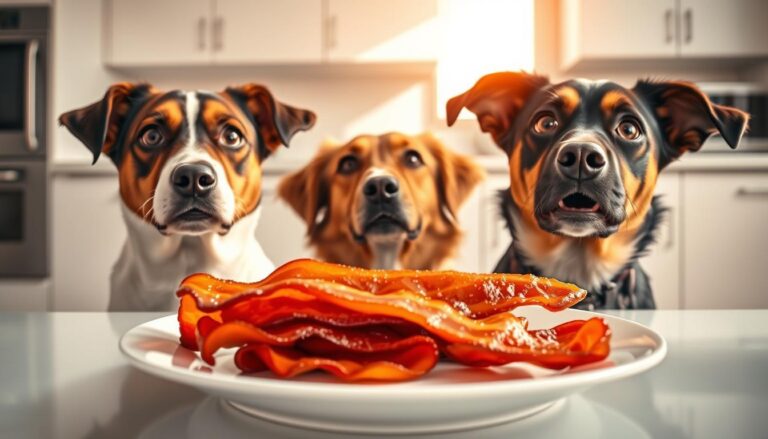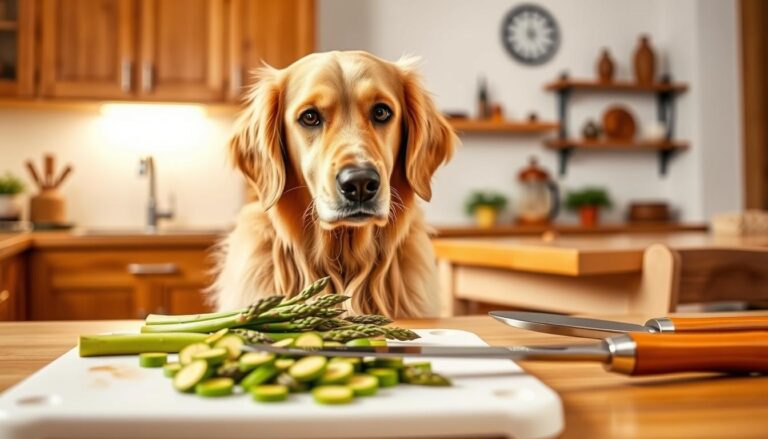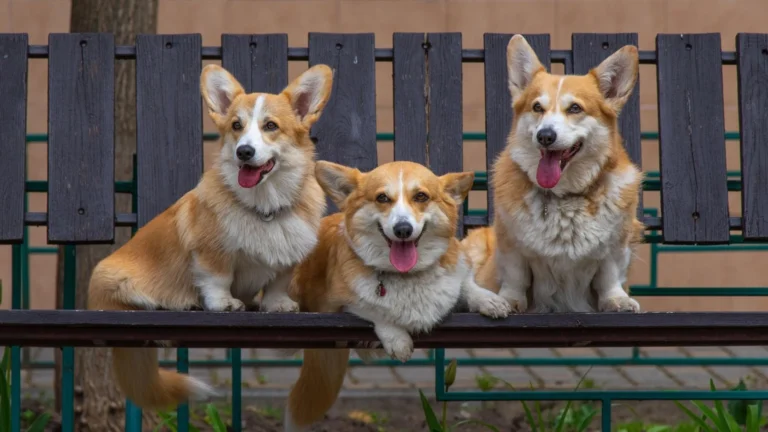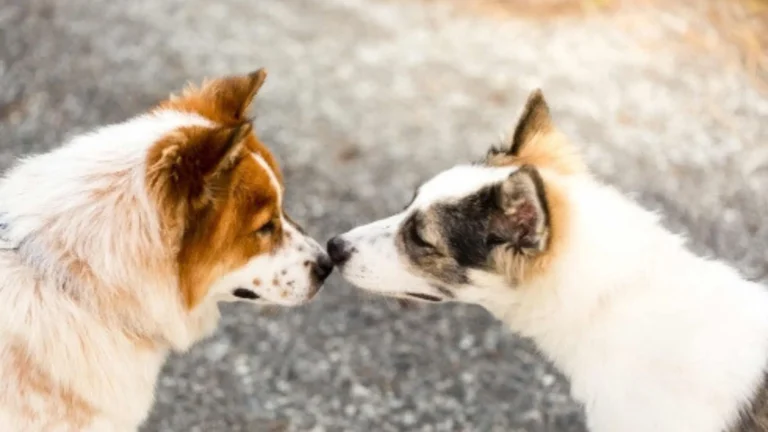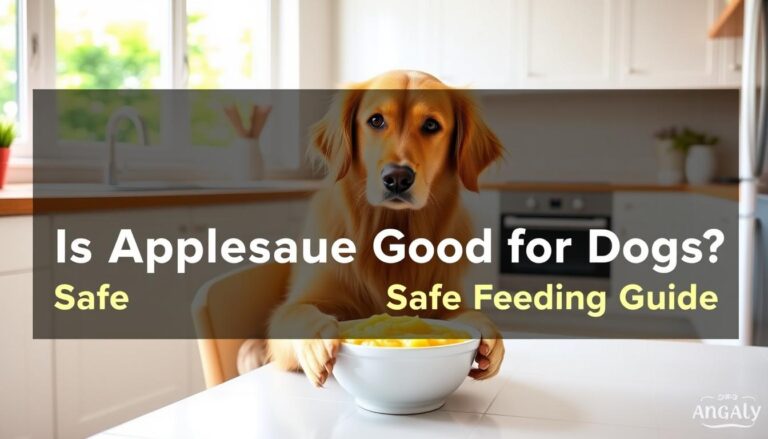Why Do Dogs Get Stuck Together When Mating? Explained
As a dog owner, I’ve seen my pets deal with reproduction in a way that’s both fascinating and puzzling. The question of why dogs get stuck together during mating has confused many. It’s a topic that has sparked a lot of questions about dog mating behavior.
It’s important for pet owners to understand this natural process. When dogs mate, they go through a unique biological process. This might seem strange, but it’s essential for reproduction. The copulatory tie is a normal part of canine reproduction that helps ensure successful breeding.
Dog mating behavior involves complex biological processes that are not always easy to see. The moment when dogs get stuck together might seem awkward. But it’s actually a clever evolutionary strategy that helps increase the chances of successful reproduction.
This article will explore the science behind why dogs get stuck together during mating. It will help you understand this natural phenomenon from a biological standpoint. Whether you’re a curious pet owner or thinking about breeding, you’ll learn a lot about this interesting part of canine reproduction.
Table of Contents
Understanding the Natural Process of Dog Mating
Dog mating is a complex process that involves detailed canine reproduction habits. Knowing about animal breeding facts can help you understand this natural event. It’s not just a random act but a carefully planned biological sequence.
Stages of Mating Behavior
Dogs go through specific stages in their reproductive cycle. These stages include:
- Initial attraction
- Courtship rituals
- Mounting
- Actual mating
- Post-mating separation
Physical Changes During Mating
During mating, dogs undergo significant physical changes. The female dog enters her heat cycle, showing signs of reproductive readiness. Male dogs become sexually aroused, with noticeable swelling of reproductive organs.
Role of Hormones in the Process
Hormones are key in canine reproduction habits. Testosterone in males and estrogen in females trigger specific behaviors and physical responses. These chemical messengers control the breeding process, ensuring successful reproduction.
Understanding these intricate animal breeding facts helps dog owners and breeders manage reproductive health more effectively.
Why Do Dogs Get Stuck Together?
The dog mating process is quite fascinating. It involves a unique biological mechanism that might seem odd to us. When dogs mate, they become locked together in a special way. This is a natural part of their mating instincts, crucial for reproduction.
During mating, the male dog’s bulbus glandis (a special gland) swells up. This swelling locks the male and female together. It’s a natural way to ensure successful reproduction.
- The tie ensures sperm are effectively deposited
- Prevents other males from mating immediately
- Increases the likelihood of successful fertilization
So, why does this happen? The mating process in dogs is complex and evolved to boost breeding success. The lock lasts between 10-30 minutes, keeping both dogs connected. It’s important not to try to separate them, as it can hurt them badly.
Nature has designed this mechanism to protect and optimize the reproductive process in canines.
Vets say this is a normal part of dog mating. It’s key to stay calm and patient during this time. This ensures the dogs’ safety and comfort.
The Science Behind the Copulatory Tie
Exploring pet reproduction behavior, the copulatory tie is a key part of animal mating rituals. Dogs go through a unique biological event during mating that might seem odd to us. Learning about this process helps us understand the complex ways dogs reproduce.
What Happens During the Tie
During mating, dogs form a physical bond that helps with reproduction. The male dog’s penis swells inside the female’s body, creating a lock. This lock prevents them from separating right away and is very important for reproduction.
- Blood flow increases to the penis
- Muscular contractions occur in reproductive organs
- A physical connection is maintained between male and female
Duration of the Copulatory Lock
The time dogs stay connected can vary a lot. Usually, they stay locked for about 15-20 minutes, but it can be shorter or longer. Several things affect how long, like the dogs’ breed, age, and health.
Biological Purpose of the Tie
The main reason for the copulatory tie is to increase chances of successful reproduction. By staying connected, dogs make sure more sperm stays inside the female’s body. This boosts the chances of fertilization and pregnancy.
Nature has designed this remarkable mechanism to optimize the chances of species continuation.
The Purpose of the Mating Lock in Nature
Dog breeding patterns show us how dogs reproduce. In the wild, the copulatory tie is key for successful reproduction. It helps dogs have babies.
The mating lock is a special biological process. It’s important in animal breeding. It makes sure only one male dog can mate with a female at a time. This increases the chances of successful fertilization.
- Prevents immediate multiple mating attempts
- Increases genetic success for a single male
- Ensures maximum sperm retention
Evolution has shaped these dog breeding patterns. The copulatory tie acts as a barrier. It keeps seminal fluid inside the female, boosting the chance of conception.
| Evolutionary Purpose | Biological Mechanism |
|---|---|
| Genetic Selection | Reduced Competition |
| Increased Fertilization Chance | Prolonged Sperm Exposure |
Domesticated dogs still have these wild instincts. This shows how deeply these mechanisms are in dogs. Knowing these facts helps us understand dog reproduction better.
Common Misconceptions About Dog Mating
Understanding dog mating can be tough for many pet owners. Canine reproduction habits often cause confusion and wrong assumptions. This can lead to unnecessary worry.
Separating Myths from Reality
Many myths surround dog mating that confuse pet owners. Let’s look at some common misconceptions:
- A copulatory tie does not automatically guarantee pregnancy
- Dogs can potentially conceive without a complete tie
- The mating process appears unusual but is typically natural for canines
Safety During Canine Reproduction
While dog mating might look odd to us, it’s normal for dogs. Their reproductive instincts are designed for successful mating.
When Professional Help Matters
Some mating situations need a vet’s help. Look out for these warning signs:
- Unusually prolonged copulatory tie lasting more than 30 minutes
- Visible signs of distress from either dog
- Apparent pain or aggressive behavior during mating
- Unexpected bleeding or discharge
Responsible pet owners should stay calm. Most mating encounters are natural and safe. If unsure about your dogs’ reproductive health, a vet can offer professional advice.
Duration and Variables of the Mating Process
Canine mating instincts show that the time dogs spend mating can change a lot. Animal mating rituals are full of interesting biological processes. These processes affect how long dogs stay connected during mating.
Several key factors impact the mating process duration:
- Dog Age: Younger and older dogs may experience different mating timeframes
- Breed Size: Larger breeds might have longer connection periods
- Sexual Experience: Experienced dogs typically have more predictable mating cycles
- Individual Physiological Differences: Each dog’s unique biological response plays a role
Typical mating duration ranges from 10 to 30 minutes, though some animal mating rituals can extend up to an hour. The swelling of reproductive tissues determines how long dogs remain connected during the copulatory tie.
Environmental factors like stress, temperature, and overall health can significantly influence canine mating instincts. Calm, comfortable settings typically promote more successful and efficient mating processes.
Veterinary experts recommend monitoring dogs during mating to ensure their comfort and safety.
Understanding these variables helps dog owners and breeders recognize normal mating behaviors and potential considerations during the reproductive process.
What to Do When Dogs Are Stuck Together
Dogs can get stuck together during mating, a phenomenon called a copulatory tie. It’s important to know how to handle this for responsible dog breeding and animal care.
Stay calm and patient if dogs get stuck together. Your reaction can greatly affect their comfort and safety.
Proper Handling Techniques
- Keep the dogs calm and comfortable
- Prevent unnecessary movement
- Minimize external stimulation
- Do not attempt to separate the dogs forcibly
Trying to pull dogs apart during a mating tie can cause serious harm and stress.
Signs of Distress to Watch For
While most mating ties are natural, some need vet attention. Look out for these warning signs:
- Excessive whimpering or yelping
- Visible signs of pain
- Prolonged tie lasting more than 30 minutes
- Unusual bleeding
- Aggressive behavior between dogs
“Patience and observation are key when dogs are in a natural mating process.” – Veterinary Reproductive Specialists
Knowing about dog breeding patterns is crucial for your pets’ safety and well-being during mating.
Prevention and Breeding Management
Knowing how dogs reproduce is key for good pet care. Managing your dog’s reproductive health involves several choices.
To avoid unwanted breeding, you need a plan and action. Here are important steps for managing breeding:
- Spaying and Neutering: The best way to stop unplanned pregnancies and some health issues
- Track when female dogs are in heat
- Watch them closely when they might mate
If you want to breed, knowing about health checks is vital. You should:
- Do genetic tests for inherited diseases
- Make sure both dogs are healthy
- Talk to a vet who knows about dog reproduction
Female dogs usually go into heat every 6-12 months. You’ll need to be extra careful then:
- Keep female dogs on a leash when walking
- Keep male and female dogs apart
- Watch for signs they might mate
By understanding dog reproduction, you can make smart choices about your pet’s health. This helps prevent unwanted breeding.
Health Considerations During Dog Mating
When breeding dogs, it’s important to focus on their health. The mating process is more than just physical. It’s about being prepared and understanding how dogs reproduce.
Before you start, make sure both dogs are healthy. A thorough health check is key to protect the puppies and the parents.
Physical Requirements for Safe Mating
Here are some important physical factors for safe mating:
- Dogs should be at least 2 years old for full physical maturity
- Breed-appropriate weight and body condition
- Updated vaccination records
- Clear genetic health screenings
Signs of Potential Complications
Watch for these signs during mating:
- Excessive aggression between dogs
- Unusual discharge or bleeding
- Difficulty during the mating process
- Visible pain or distress
Getting a vet’s advice before breeding is crucial. It helps reduce risks and keeps both dogs and puppies healthy.
Responsible Pet Ownership and Breeding
Dog breeding is a big responsibility that needs a lot of thought and commitment. It’s not just about mating dogs. It requires deep knowledge, hard work, and making ethical choices.
Before starting a breeding program, you must think about several important things:
- Genetic health screening of potential breeding dogs
- Comprehensive understanding of breed-specific traits
- Financial readiness for veterinary care
- Commitment to finding suitable permanent homes
Breeding dogs comes with big responsibilities. Ethical breeders put animal welfare first, not money. Your main goal should be to improve the breed, keep genetic diversity, and raise healthy puppies.
Important steps for responsible breeding include:
- Conducting thorough health examinations
- Understanding genetic inheritance patterns
- Providing exceptional prenatal and postnatal care
- Ensuring optimal nutrition for breeding dogs
Professional breeding means always learning about dog reproduction. It’s key to work with vets, join breed groups, and keep up with genetic studies. This helps you become a responsible breeder.
“Breeding is a privilege, not a right. It demands scientific knowledge, emotional commitment, and unwavering dedication to animal welfare.” – Veterinary Breeding Association
Conclusion
It’s important for pet owners to understand why dogs get stuck together during mating. This natural process, called the copulatory tie, is key for canine reproduction. Learning about dog mating behavior helps support your pets’ health and breeding decisions.
Dog mating is a complex process with important biological functions. Whether you breed dogs or want to prevent unwanted pregnancies, knowing the signs and stages of mating is crucial. It helps you care for your dogs properly.
Being a responsible pet owner means knowing about your dogs’ reproductive health. This includes understanding why dogs get stuck together and recognizing normal mating behaviors. Knowing when to seek veterinary advice is also important. With education and care, you can support your dogs’ well-being and make informed decisions about their future.
Remember, each dog is different. While there are general principles, individual experiences can vary. Always get advice from a vet for your dogs’ specific needs.



